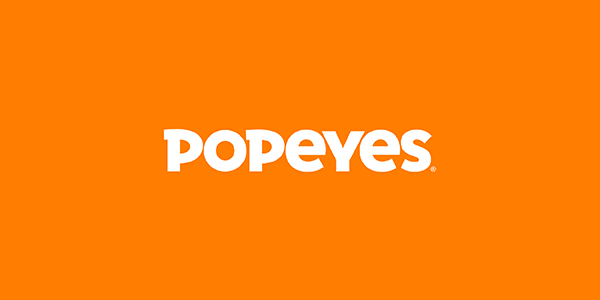Linear TV vs. Connected TV: Key Differences, Benefits, and Strategies

For years, advertisers favoured traditional linear TV advertising over other forms of advertising due to its broad reach and ability to deliver massive amounts of brand awareness at scale.
But times are changing. After peaking in 2018, linear TV ad spending is on a downward trend, with ad spend expected to decrease from $60.56 billion USD in 2024 to $56.83 billion USD in 2027.
Meanwhile, connected TV (CTV) usage is on the rise (US residents are expected to spend 3 hours and 33 minutes watching CTV per day in 2026—a 31.48% increase from 2022). As a result, EMARKETER reports that CTV ad spending will experience consistent double-digit annual growth rates between now and 2028 when it will officially surpass traditional linear TV ad spending for the first time.
The Interactive Advertising Bureau (IAB) reports that 4 in 10 US agency and marketing professionals reallocated ad dollars from linear TV to CTV in 2024. But there’s a lot to consider when deciding between linear TV vs. CTV for your ad campaigns.
This article will explore the differences between traditional linear TV and CTV advertising, the right times to use both, and how to decide where to invest your advertising spend.
What Is Linear TV?
Linear TV, or traditional broadcast TV, is any TV watched through cable or satellite services with scheduled programming.
The term “linear” refers to how the content is delivered. Unlike on-demand content, viewers follow a set schedule determined by channels and networks. In linear TV advertising, ads get inserted into commercial breaks at predetermined times based on programming schedules.
While some find the term confusing, linear TV simply refers to the traditional model of television that predates streaming services.
Benefits of Linear TV Advertising
Despite being a traditional format, linear TV continues to have unique benefits that advertisers can leverage to reach their campaign goals.
Here are a few advantages of linear TV advertising:
1. Advertise Alongside Live Events
With linear TV, you can place ads during live programming, like live sporting events, awards shows, and daily news programs.
For example, over 126 million viewers watched Super Bowl LIX, mainly through linear TV, with only 22.3% of viewers streaming the Super Bowl through digital platforms. That said, the Super Bowl saw a 150.9% increase in streaming from its previous high in 2022.
2. Reach an Older Demographic
Although baby boomers increasingly adopt digital channels like CTV for watching content, many of them continue to prefer linear TV.
Baby boomers watch more linear TV than other generations in the US. EMARKETER reports that 38.1% of linear TV viewers in the US are aged 55 and up, with 54.4 million being over 65. Baby boomers spend more of their day watching linear TV than other generations. The average baby boomer watches four hours and 45 minutes per day—an hour and a half longer than its nearest generation, Gen X.
Brands and industries are taking notice, with pharma advertisers spending $3.4 billion USD targeting baby boomers watching linear TV in the first eight months of 2024, an 8.1% increase from the year before.
3. Segment by Channel and Air Time
Different demographics tend to watch different networks, shows, and time slots. Linear TV allows you to reach these audiences more effectively by selecting specific channels and air times, providing a predictable way to engage them.
For example, if you want to target the parents of young children, you can place ads during afternoon time slots on channels that air children’s programming.
As a bonus, running ads in primetime slots or on popular networks can help build credibility, making your brand more trustworthy and recognizable.
What Is Connected TV?
CTV refers to televisions and devices that stream digital content over the internet rather than through traditional cable or satellite services.
CTV advertising delivers ads within streamed content on internet-connected TVs and devices. This includes in-stream video ads that play before, during, or after TV shows, movies, or other content, as well as interactive and overlay ads that appear on-screen while content is playing.
Unlike traditional linear TV advertising, which targets broad audiences watching scheduled programming, CTV advertising uses data-driven targeting—similar to addressable TV—to reach viewers streaming live or on-demand content through platforms like Disney, Max, Peacock, Channel 4, and Pluto TV.
Benefits of Connected TV
CTV advertising combines the precision targeting of digital advertising with the high-impact experience of traditional TV. It allows advertisers to reach the right audience at the right time, engaging viewers when they’re most receptive—watching TV on-demand in the comfort of their homes.
Here are a few key benefits of CTV advertising:
1. Enhanced Targeting Capabilities
CTV ads are transacted on an impression basis, much like video and display ads sold through a demand-side platform. This allows you to apply advanced targeting strategies using 1st-party data, 3rd-party segments, and lookalike audiences.
With CTV advertising, you can serve ads based on user behaviour, demographics, location, and other factors—ensuring you reach the right audience while minimizing wasted ad spend.
2. Real-Time Optimization and Measurement
With traditional linear TV ads, advertisers often wait weeks or longer for performance reports. CTV provides real-time reporting with key metrics like impressions, cost-per-completed view, video completion rate, and view-through conversions. This makes it easier to track performance and connect the dots between ad exposure and conversions, helping you optimize and understand the performance of campaigns in real time.
3. Increased Viewer Engagement
CTV drives greater viewer engagement than traditional linear TV. CTV ads are less likely to be skipped, delivered in high-definition formats like 4K, and support interactive ad experiences. This leads to higher completion rates and longer watch times.
For example, in the first half of 2022, CTV ads achieved a global viewability rate of 93.2%, meaning nearly all ads served on internet-connected TVs were fully visible to viewers. This outperformed all other digital formats, reinforcing CTV’s strength as an advertising channel.
Linear TV Advertising vs. Connected TV Advertising: Key Differences and Considerations
Now that we’ve covered the benefits of linear TV vs. CTV advertising, let’s briefly summarize the key differences and what to consider when planning your media buying.
- Scale: Although there are 227.1 million traditional linear TV viewers in the US, that number is shrinking as more households shift towards streaming or completely cut ties with cable.
- Reach: Linear TV historically has the highest number of baby boomers as viewers, while CTV is more popular with younger demographics, particularly millennials and Gen Zers.
- Targeting: While linear TV relies on broad demographics, CTV enables more precise audience targeting and segmentation. Advertisers can serve ads to specific households or even individual viewers across devices.
- Access to live events: Although linear TV typically provides more access to live sports, nearly every major sports league—including the MLB, NBA, NHL, NFL, WNBA, and WWE—has inked deals with streaming services over the past few years, opening up new advertising opportunities for endemic and non-endemic brands.
- Ad loads: It can vary, but viewers typically see an average of 15 minutes per hour watching linear TV compared to one to nine minutes per hour while streaming. That said, it depends on the platform, with free ad-supported streaming services having higher ad loads than other services.
- Affordability: Linear TV may have higher ad loads per hour, but streaming inventory has grown so much in recent years—especially due to new ad-supported tiers—that ad prices are dropping. The average CPM ranges from $15 to $30 USD, with only two streaming services predicted to have higher CPMs in 2025.
- Measurement: Traditional TV measurement relies on panel-based estimates, making performance tracking slower and less granular. CTV, on the other hand, can provide real-time access to specific metrics, providing deeper insights into campaign effectiveness.
- Flexibility: Linear TV ad placements are typically locked in well in advance, limiting the ability to adjust campaigns mid-flight. CTV allows for real-time optimizations, allowing advertisers to adjust budgets, refine audience segments, and update creatives based on performance data.
Linear TV and Connected TV Advertising Strategies
Although some advertisers may choose one or the other for their campaigns, linear TV advertising and CTV advertising can be used together to help you reach your campaign goals.
Here are three strategies that combine the power of linear TV and CTV:
1. Repurpose Linear TV Ads for CTV Campaigns
You don’t have to reinvent the wheel for CTV advertising. Since linear TV and CTV use the same core creative format (i.e., a commercial), you can easily repurpose existing linear TV ads for CTV. This allows you to expand your reach without spending time and money producing new assets from scratch.
Need some inspiration? Check out these CTV ads the StackAdapt Creative Studio team put together for clients.
2. Use Linear TV and CTV to Broaden Your Campaign Reach
A study found that advertisers who leveraged linear TV and CTV advertising achieved a 32% increase in total reach compared to those who used linear TV alone. Consider using a combination of linear TV and CTV to connect with older demographics who still watch traditional TV and cord-cutters who rely entirely on streaming to gain incremental reach.
3. Bridge the Gap Between Channels Through Retargeting
CTV retargeting allows you to re-engage viewers who have already seen your ads. Using household IP targeting, device matching, and audience segmentation, you can serve follow-up ads on CTV—or other digital channels, like native and display—to reinforce messaging and drive conversions. This strategy creates a seamless cross-channel experience, helping your brand stay top of mind as audiences move between devices and platforms.
Get Started With Linear and Connected TV Advertising
In a 2024 survey, when asked what type of inventory was more valuable—CTV or primetime linear TV—nearly half of marketers surveyed said the two were equally valuable.
Ultimately, deciding between linear TV and CTV depends on the goals of your campaign.
Linear TV and CTV advertising both have unique benefits. But when leveraged together, they can drive even better results.
Want to run exceptional linear TV and CTV campaigns? Download our guide to CTV advertising and request a demo to learn more about StackAdapt.
Linear TV vs. Connected TV FAQ
Linear TV advertising refers to ads that are delivered at a particular time, on a particular channel, as part of linear TV programming.
Linear TV is television programming that is consumed at a set time and on a set TV channel. Non-linear TV is typically streamed and can be watched at any time.
It’s called “linear” TV because of how the content is consumed. Viewers can watch programming only at its scheduled time, and via a specific channel.







